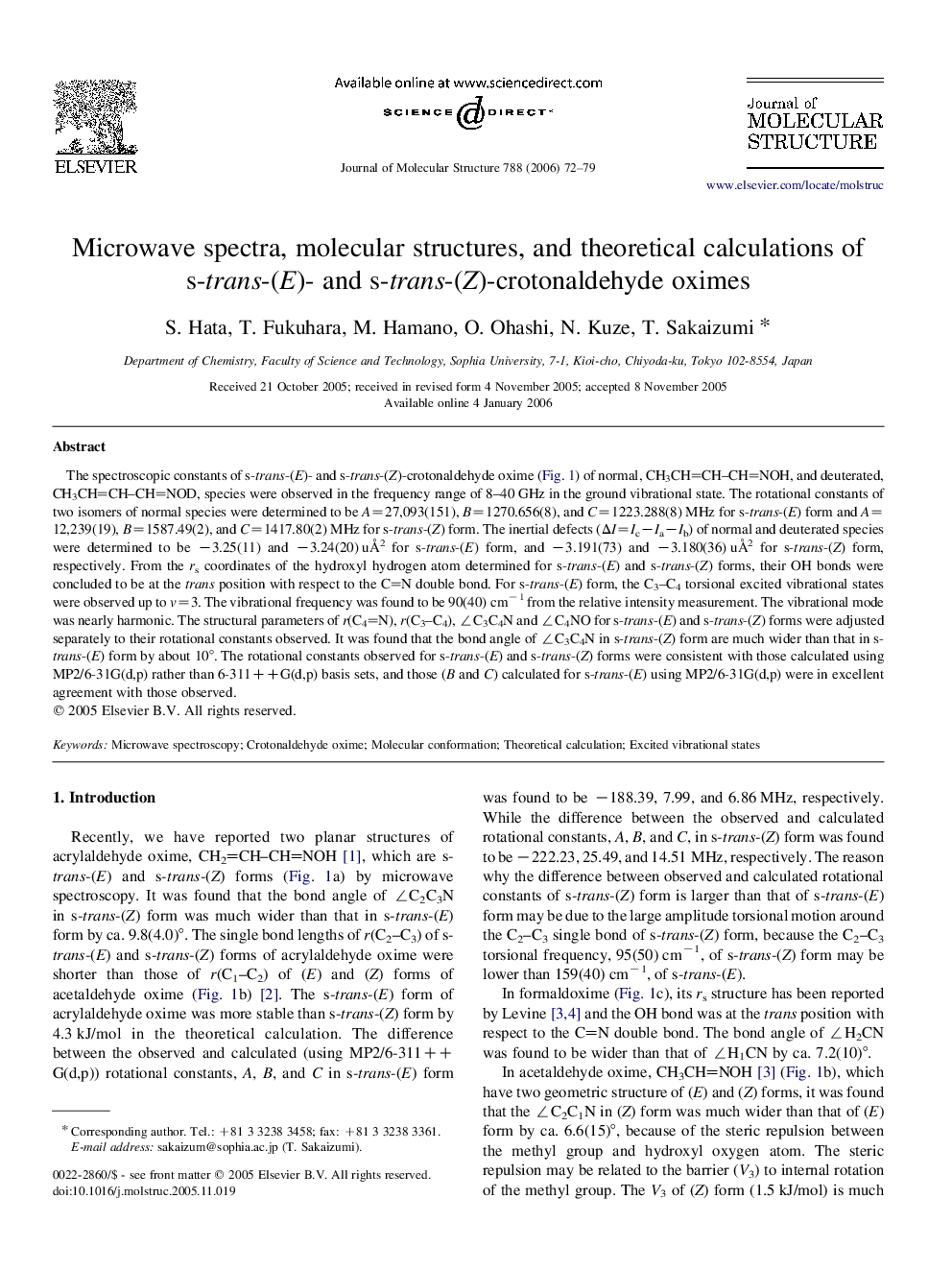| Article ID | Journal | Published Year | Pages | File Type |
|---|---|---|---|---|
| 1407844 | Journal of Molecular Structure | 2006 | 8 Pages |
The spectroscopic constants of s-trans-(E)- and s-trans-(Z)-crotonaldehyde oxime ( Fig. 1) of normal, CH3CHCH–CHNOH, and deuterated, CH3CHCH–CHNOD, species were observed in the frequency range of 8–40 GHz in the ground vibrational state. The rotational constants of two isomers of normal species were determined to be A=27,093(151), B=1270.656(8), and C=1223.288(8) MHz for s-trans-(E) form and A=12,239(19), B=1587.49(2), and C=1417.80(2) MHz for s-trans-(Z) form. The inertial defects (ΔI=Ic−Ia−Ib) of normal and deuterated species were determined to be −3.25(11) and −3.24(20) uÅ2 for s-trans-(E) form, and −3.191(73) and −3.180(36) uÅ2 for s-trans-(Z) form, respectively. From the rs coordinates of the hydroxyl hydrogen atom determined for s-trans-(E) and s-trans-(Z) forms, their OH bonds were concluded to be at the trans position with respect to the CN double bond. For s-trans-(E) form, the C3–C4 torsional excited vibrational states were observed up to v=3. The vibrational frequency was found to be 90(40) cm−1 from the relative intensity measurement. The vibrational mode was nearly harmonic. The structural parameters of r(C4N), r(C3–C4), ∠C3C4N and ∠C4NO for s-trans-(E) and s-trans-(Z) forms were adjusted separately to their rotational constants observed. It was found that the bond angle of ∠C3C4N in s-trans-(Z) form are much wider than that in s-trans-(E) form by about 10°. The rotational constants observed for s-trans-(E) and s-trans-(Z) forms were consistent with those calculated using MP2/6-31G(d,p) rather than 6-311++G(d,p) basis sets, and those (B and C) calculated for s-trans-(E) using MP2/6-31G(d,p) were in excellent agreement with those observed.
